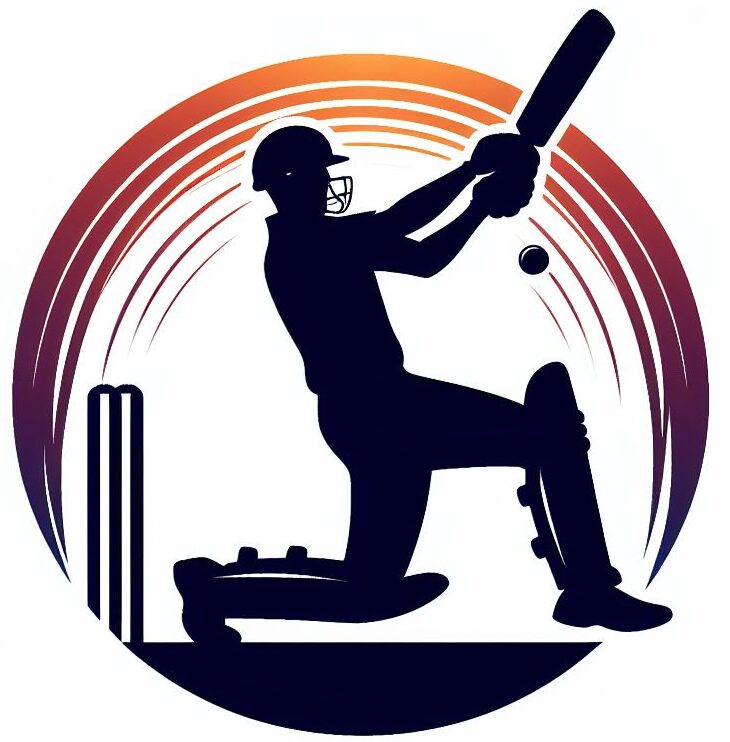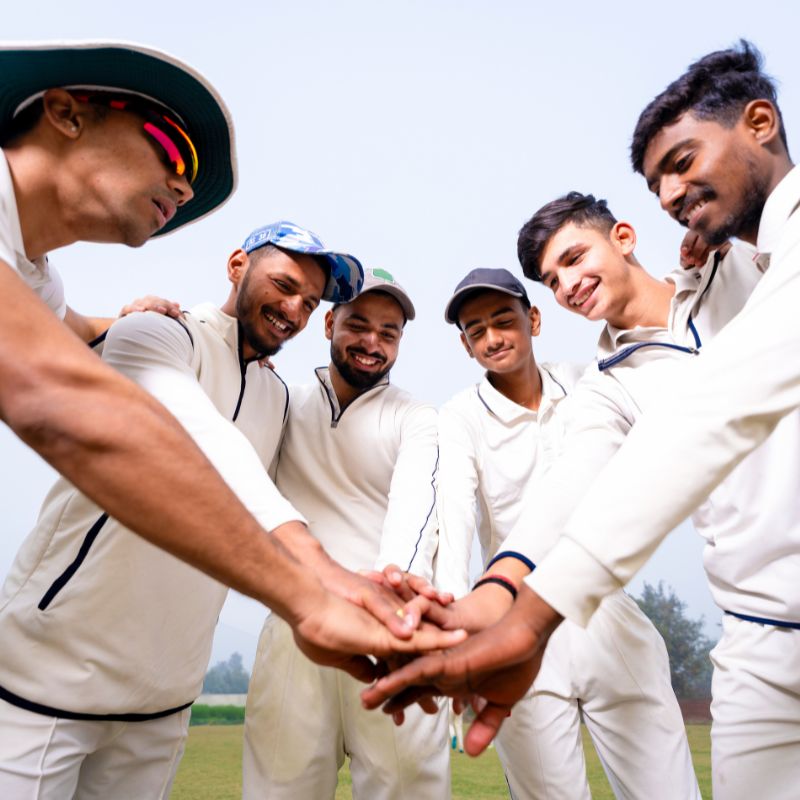In a previous post, we spoke about fun training drills to help kids learn how to field in cricket. We then thought about it. “Why just kids? Why not older players and adults, too? Why not different and fun ways to learn how to be a better fielder regardless of how old you are?”
So, here we are – fun fielding cricket drills for cricketers of all ages.
Fun Fielding Drills for Young, New Cricketers (Ages 5-10)
We’ll start with the young ‘uns, first. Introducing young cricketers to the fundamentals of fielding should be both educational and enjoyable. At this age, it’s important to focus on drills that develop basic skills like catching, throwing, and agility while keeping the experience fun and engaging. Here are a few exciting fielding drills specifically designed for young, new cricketers.
1. Catch the Rainbow
Catch the Rainbow is a colourful and dynamic drill that makes catching practice fun and visually stimulating. In this drill, coaches use a variety of soft balls in different colours, each representing a point value. The balls are thrown gently at varying speeds and heights, and players have to catch them. The challenge is to catch as many different coloured balls as possible within a set time limit.
This drill helps improve hand-eye coordination and introduces young players to the concept of catching balls that come at them from different angles and speeds. By associating each colour with a different score, it also adds a fun competitive element, encouraging kids to stay focused and try their best.
2. Bucket Brigade
The “Bucket Brigade” drill is a relay-style game that emphasizes teamwork and quick, accurate throwing. Players are divided into two teams and line up in single-file lines. The first player in each line holds a ball and, on the coach’s signal, must pass the ball over their head to the player behind them. This continues down the line until the last player catches the ball and runs to the front to start again. The team that completes the most passes in a set time wins.
This drill is great for developing throwing skills, as each child must focus on making an accurate throw to their teammate. It also promotes teamwork, as the success of the team depends on each player’s ability to pass and catch effectively. The fast-paced nature of the drill keeps it exciting and encourages players to stay engaged.
3. Treasure Hunt
Treasure Hunt is a thrilling drill that combines agility, speed, and safe catching techniques. In this drill, various cones are spread across the field, with small balls or beanbags hidden underneath them. These represent the “treasures.” Players are given a set time, usually a minute or two, to run around the field, lift the cones, and collect as many treasures as possible.
This drill not only adds an element of excitement with the hunt for treasures but also improves agility and quick decision-making as players have to move rapidly and choose the best path to gather the most items.
Fun Fielding Drills for Intermediate Cricketers (Ages 11-15)
As cricketers move into their early teens, their skills and understanding of the game begin to develop more rapidly. For this age group, fielding drills should still be enjoyable, but they can also introduce more complexity and a competitive edge. These drills aim to refine throwing accuracy, enhance reaction time, and foster teamwork, all while keeping the players engaged.
1. King of the Ring
King of the Ring is a competitive drill that improves catching skills under pressure. Players form a circle and pass the ball around randomly to each other. If a player drops the ball, they are eliminated from the circle and must perform a quick exercise (like a few push-ups or star jumps) before returning to watch. The last player standing in the circle becomes the “King of the Ring.”
This drill is excellent for enhancing reaction times and developing concentration, as players must be ready to catch the ball at any moment. The element of elimination adds a fun, competitive aspect that encourages players to stay focused and improve their catching ability. Additionally, it promotes quick decision-making and adaptability, as the ball can be thrown to anyone at any time.
2. Target Practice with a Twist
Target Practice with a Twist is a fun drill designed to improve throwing accuracy. In this drill, a series of targets (like stumps, cones, or even hanging hoops) are set up at various distances around the field. Each target is assigned a different point value based on its difficulty level. Players take turns throwing at the targets, aiming to accumulate as many points as possible within a set number of throws.
This drill helps players focus on their throwing technique and accuracy, which are crucial for effective fielding. By incorporating a scoring system, the drill also introduces a competitive element, motivating players to challenge themselves and each other. It can be made more challenging by increasing the distances or adding moving targets, which also helps improve hand-eye coordination and precision.
3. Speed Catch Challenge
The “Speed Catch Challenge” is a high-energy drill that enhances reflexes and hand-eye coordination. Players pair up and stand opposite each other at a set distance, starting relatively close. They throw the ball back and forth as quickly as possible, trying not to drop it. As they get more comfortable, the coach can gradually increase the distance or speed up the pace of the throws to make it more challenging.
This drill is perfect for developing quick reactions and improving catching skills under pressure. It also promotes good communication between players, as they need to coordinate their throws and catches to maintain the fast-paced rhythm. The competitive nature of the drill, where pairs try to outlast each other without dropping the ball, keeps players engaged and focused.
Fun Fielding Drills for Teen Cricketers (Ages 16-18)
As cricketers reach their late teens, they typically possess a stronger foundation in fielding skills and a deeper understanding of the game. At this stage, drills should be more challenging, emphasizing advanced skills like diving catches, throwing accuracy under pressure, and quick decision-making. However, it’s still essential to keep these drills engaging and enjoyable to maintain players’ enthusiasm. Here are some fun yet challenging fielding drills designed specifically for teen cricketers.
1. Diving Saves
Diving Saves is a high-intensity drill that helps players build confidence in diving to stop balls and improves their agility and reaction times. In this drill, a coach or another player hits or throws balls to either side of a fielder, who must dive to stop the ball. The balls can be rolled, hit along the ground, or even lobbed in the air to simulate various match scenarios.
This drill is excellent for developing the ability to react quickly and dive safely, which is crucial for close fielding positions like the slips or infielders. By practicing these movements repeatedly, players gain the confidence to dive during actual matches, potentially saving runs and creating wicket opportunities. The competitive element can be added by scoring each successful save, motivating players to push their limits.
2. Backstop Relay
The “Backstop Relay” drill is designed to sharpen reflexes and improve fielding skills close to the stumps. Players take turns standing behind the stumps as the wicketkeeper while their teammates throw balls toward them from various angles and distances. The goal is to catch or stop the ball cleanly and return it quickly to a designated target, such as another set of stumps.
This drill is particularly beneficial for those aspiring to be wicketkeepers or fielders in positions requiring quick reflexes and safe hands, such as in slips or short leg. It trains players to react swiftly to unpredictable balls, encouraging focus and concentration. Additionally, the relay format introduces a team element, promoting camaraderie and communication.
3. Rolling Chaos
Rolling Chaos is a dynamic drill that enhances agility, quick decision-making, and teamwork. In this drill, multiple balls are rolled simultaneously in different directions across the field. Players must quickly decide which ball to go after, field it cleanly, and return it accurately to a designated target. The coach can adjust the difficulty by increasing the number of balls or varying the speed and direction of the rolls.
This drill simulates match scenarios where things are happening quickly on the field, requiring players to make rapid decisions under pressure. It also promotes agility and sharpens fielding techniques, as players must move quickly and maintain control of their throws. By adding a scoring system based on successful fields and accurate throws, the drill becomes a fun competition that keeps everyone engaged.
Fun Fielding Drills for Adult, More Experienced Cricketers
For adult cricketers who have gained substantial experience and a solid grasp of fielding fundamentals, drills should focus on refining advanced techniques, maintaining high-intensity performance, and simulating realistic match scenarios. These drills aim to push players to the peak of their abilities, combining skill refinement with elements of competition and pressure. Here are some engaging and challenging fielding drills designed for adult cricketers to further enhance their skills.
1. Slip Catching Marathon
Slip Catching Marathon is a specialized drill for fielders in slip positions. Players line up in a slip cordon, and a coach or teammate uses a bat or throwdown device to send balls toward them at various angles and speeds. The goal is for each player to take as many catches as possible without dropping any. The drill can be intensified by increasing the speed or decreasing the distance between players and the coach.
This drill helps players develop quick reflexes, soft hands, and concentration—critical skills for slip fielders. It also fosters teamwork and communication, as slip fielders need to be aware of their positioning and the movements of their teammates. The continuous catching practice under different conditions prepares players for the unpredictable nature of match situations, enhancing their confidence and effectiveness in slips.
2. High Ball Frenzy
High Ball Frenzy is a thrilling drill designed to improve catching skills under pressure and in challenging conditions. Players practice catching high balls hit by a coach or teammate, simulating match situations with distractions such as simulated crowd noise or challenging lighting conditions (e.g., evening sun or floodlights).
This drill builds confidence in catching high, difficult balls and trains players to focus amid distractions, replicating the pressure of game-day scenarios. The challenge can be increased by hitting balls at different angles, heights, and speeds or by incorporating competitive elements, such as awarding points for each successful catch. This keeps the drill engaging and encourages players to improve their catching skills consistently.
3. Rapid Fire Drill
The “Rapid Fire Drill” is a high-energy, fast-paced drill designed to improve ground fielding and throwing accuracy under pressure. In this drill, the coach hits a series of ground balls rapidly to various fielders positioned around the field. Each fielder must cleanly field the ball and return it accurately to a designated target, such as the wicketkeeper or stumps. The drill continues in quick succession, allowing minimal time for rest between balls.
This drill helps develop quick reaction times, sharpens ground fielding techniques, and improves the ability to throw accurately under pressure. The rapid pace of the drill simulates the intensity of a match where fielders must be ready to perform multiple tasks in quick succession. By adding a competitive scoring system, where points are awarded for clean fields and accurate throws, players are encouraged to maintain high standards throughout.
Conclusion
Regardless of their age, people like to have fun, even when they are training. Hopefully, we’ve given you some ideas of how to add that extra dollop of fun to every training session. If you have any fun training drills of your own, leave them in the comments below. We’d love to hear them.

